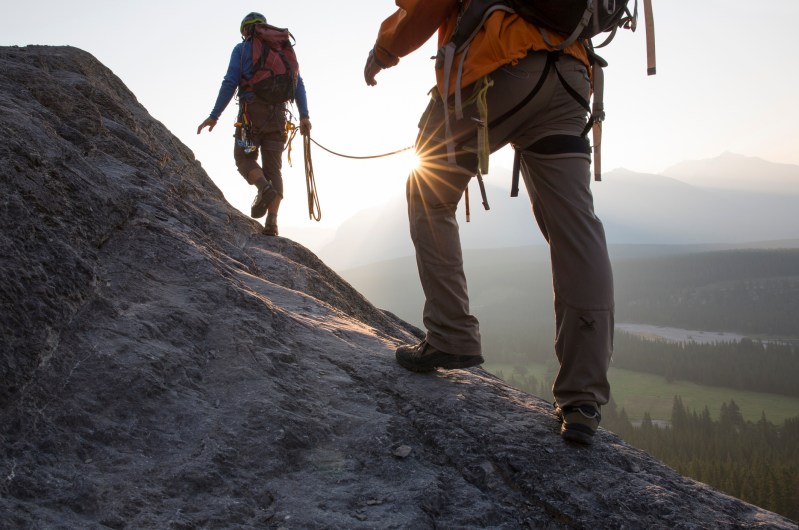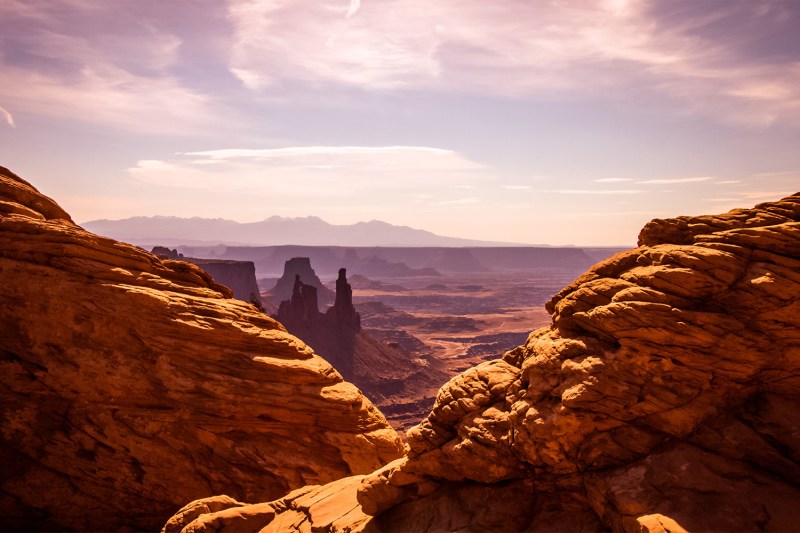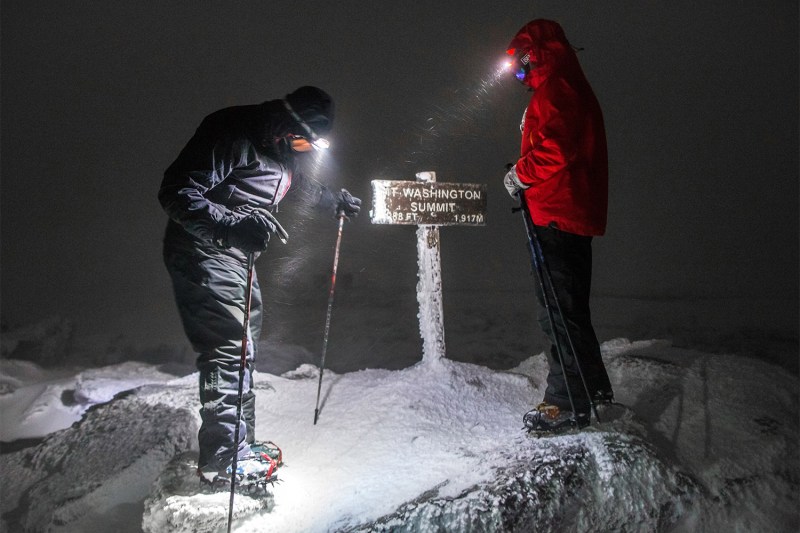
Hiking involves nothing more than going on or off the trail with your hiking boots (partnered with hiking socks) until you reach your final destination for recreational purposes. However, that doesn’t mean it’s easy. When you’re on a treacherous trail that’s considered one of the most dangerous hikes in the world, you’ll need a healthy dose of fear, maybe some hiking snacks, and a desire to push yourself to the edge — as long as you don’t fall over it.
Here are eight trails to get the adrenaline pumping — and perhaps make you hold on for dear life.
Huayna Picchu, Peru

While the trek to Peru’s Machu Picchu can be challenging, the real danger exists once inside the famous citadel. Requiring a separate ticket, the famous peak that looms over the ruins can be tricky. Known as the “Hike of Death,” the trip to the top was once reserved for high priests who had to tackle the narrow, steep steps.
Climbing over 850 feet straight up can leave even the most prepared hikers gasping for air, and rain and low-hanging clouds make the path that much more difficult. However, the view from Huayna Picchu on a clear day provides one of the most picturesque views of Machu Picchu below.
El Caminito del Rey, Spain

Constructed in 1905, the “King’s Little Pathway” was originally built to allow hydroelectric power plant workers access between Chorro Falls and Gaitanejo Falls in Spain. While the original path closed to the public in 2000 after it fell into disrepair and five people plunged to their deaths in a single year, many thrill-seekers disregarded the signs for their chance to skirt along the narrow gorge that’s suspended 100 feet above the floor.
Large sections of the path crumbled away, and hikers navigated rusted metal support beams that once supported the original concrete path. Fortunately for thrill-seekers, a newly constructed path reopened in 2015 and consists of a narrow (yet nonetheless safer) walkway pinned to the walls of a steep, narrow gorge. El Caminito del Rey still offers heart-pounding heights and spectacular views.
Via Ferrata, Italy and Austria

The “Iron Road” was heavily used during World War I to move troops through the mountainous regions of Italy and Austria. Today, newer and more accessible routes exist, allowing tourists to experience the adrenaline rush of exploring walkways and suspension bridges while tethered to steel cables. While the support makes this hike the least dangerous on our list, your safety still relies on your ability to clip in properly along the route.
Mount Hua, China

Sometimes referred to as the most dangerous hike in the world, the trek to the top of Mount Hua has been a spiritual destination for centuries. The hike begins at the base of the mountain on the Heavenly Stairs, a massive stone stairway carved into the mountainside.
As you start up the mountain, you will begin to understand how this section got its name since the stairs seem to go on forever — and that’s the easy part. The real danger begins once you reach the plank path to the peak. Rickety wooden boards suspended on the mountainside lead the way, with nothing more than a chain bolted to the rock above the path to steady yourself. Don’t look down!
Mount Pinatubo, Philippines

Mount Pinatubo has the potential for being one of the hottest hiking locations on the planet. Located in the Zambales Mountains, this active stratovolcano can provide a unique yet dangerous experience for those willing to make the trek to the crater. After being dormant for over 400 years, it erupted in 1991, the second-largest volcanic eruption of the 20th century. And while the hike up to the crater lake is relatively easy, the tendency for this unpredictable volcano to awaken is ever-present.
The Maze, United States

Located in a remote section of Canyonlands National Park, The Maze only has about 2,000 visitors each year. Though you probably won’t meet the Minotaur — seeing as he was part of ancient Greek mythology — and you probably won’t meet any robots developing consciousness — after all, Westworld is also fiction — this red rock labyrinth is full of endless dead ends, rockfalls, and flash floods.
Thankfully, the number of injuries and deaths has remained minimal due to its relative inaccessibility within the park. While the potential for injury is great due to so many unpredictable variables, this area of the park is only accessible by foot or by following hours of off-road traveling by four-wheel-drive vehicles. Once there, you must be self-sustaining and have the ability to self-rescue.
Drakensberg Traverse, South Africa

Traversing the Drakensberg, the highest mountain range in South Africa, this hike is perhaps one of the most dangerous in the world. In 1985 alone, there were 55 confirmed deaths on this route, the most occurring from falls. This high alpine trek crosses some of the most picturesque and treacherous terrains in South Africa. While the hike along the ridge can pose its own risks, to access the ridge where you begin this daunting trek, one must first navigate the rickety chain ladders that lead to the top.
Mount Washington, United States

Notorious for its erratic weather, Mount Washington has claimed more than 100 lives. It’s easy to be unprepared for what may present itself along the trail. While the weather is unpredictable any time of the year, the shoulder seasons can prove to be the most volatile. When leaving the trailhead on a mild summer day, shorts and a T-shirt may seem adequate.
However, the mountain boasts the highest wind-speed record, with winds reaching 231 mph on the summit in 1934. People have died from exposure, avalanches, and wind gusts blowing hikers off of exposed ridges. At only 6,288 feet, Mount Washington may be one of the most dangerous small mountains in the world.
What is extreme hiking?
Extreme hiking refers to hikes that push the boundaries of what most people consider achievable or safe. It can involve a variety of factors that make them challenging, such as the following.
- Distance: Extreme hikes can be very long, often exceeding 20 miles in a single day. Some multi-day thru-hikes that cover hundreds of miles can also be considered extreme.
- Elevation gain: Many extreme hikes involve significant elevation gain, sometimes reaching altitudes where oxygen is thin and the risk of altitude sickness is high (generally above 10,000 feet).
- Terrain: Extreme hikes can take place on rough, uneven terrain that may include steep climbs, descents, scree fields, exposed ridges, snowfields, or glaciers.
- Weather: Extreme hikes may take place in areas with unpredictable or dangerous weather conditions, such as extreme heat, cold, high winds, or whiteouts.
- Isolation: Some extreme hikes take place in remote areas, where there is little to no chance of encountering help in an emergency.
We hope we didn’t scare you too much with these spectacularly daring hikes. If this isn’t enough excitement, fear not: We have more ideas for your next fearless adventures. Check out our guide to the best hikes in America and our beginners’ guide to hiking.



